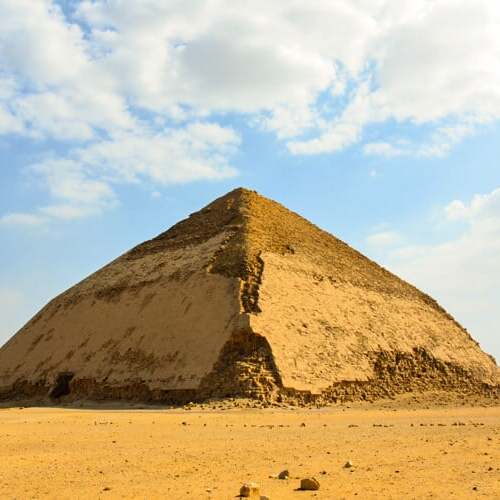No other nation in the world says ‘Welcome’ as often as the Egyptians, and every time, they mean it. While the ancient civilization of Egypt continues to amaze, contemporary Egyptians are equally remarkable.
The Northern Pyramid
Unveiling Egypt's Enigmatic Northern Pyramid: A Journey into the Past
The enigmatic Northern Pyramid, nestled within the ancient site of Zawyet el-Aryan, shrouds itself in an aura of mystery, offering tantalizing glimpses into Egypt’s distant past. This structure, like an unfinished symphony, beckons us to decipher its secrets. In 1903, the intrepid explorer Barsanti embarked on a quest to unveil its enigma, unearthing clues that have captivated historians and archaeologists ever since.
Barsanti’s excavations revealed a sprawling sloping trench leading into a pit, where remnants of a square-shaped platform measuring a staggering 200 square meters emerged from the sands of time. This tantalizing evidence hints at the grandeur that could have been if this pyramid had reached completion. Its potential scale would have rivaled the majestic Pyramid of Khafre at Giza, suggesting its construction during the Fourth Dynasty, possibly during the reigns of Pharaohs Khafre and Djedefre, who left their indelible marks on Egypt’s ancient legacy.
As Barsanti delved deeper into the trench’s recesses, he encountered massive granite and limestone blocks that seemingly had a purpose, likely destined for a burial chamber. Beneath the trench’s surface, a colossal oval-shaped sarcophagus, crafted from exquisite pink granite, awaited discovery, its connection to the structure remaining shrouded in uncertainty.
Interestingly, a parallel design style emerged during Petrie’s excavation of the Pyramid of Djedefre at Abu Rawash, where pieces of a similar sarcophagus were unearthed, adding to the enigma.
A peculiar natural phenomenon added another layer of intrigue to this archaeological puzzle. Barsanti and his team were confounded as rainwater cascaded into the trench, only to vanish swiftly, forming a pool that plunged to depths of up to one meter. This phenomenon led experts to speculate about the existence of an undiscovered chamber or passageway lurking beneath the pyramid’s foundations. Alas, due to military zoning constraints, further exploration remains an elusive dream.
The consensus among Egyptologists leans heavily toward the Fourth Dynasty origins of this enigmatic structure. The evidence supporting this hypothesis is substantial, comprising colossal stone blocks, the presence of an oval granite sarcophagus, and the sheer size of the base itself.
Moreover, certain blocks bear the indelible marks of masonry, etched with the name of the king. While initially perplexing, the clarity of the cartouche inscription has illuminated the path to understanding. This pharaoh likely succeeded King Huni, the final ruler of the Third Dynasty, and was among the first to assert his name in such a definitive manner.
Experts conjecture that the Northern Pyramid was conceived by a ruler who held sway between the reigns of Khafre and Djedefre, perhaps even a son of these illustrious pharaohs. His reign, though brief, left behind an enduring enigma, beckoning to those who dare to explore the shadows of Egypt’s ancient history.
Created On March 18, 2020
Updated On Aug , 2024
Giza Travel Guide



